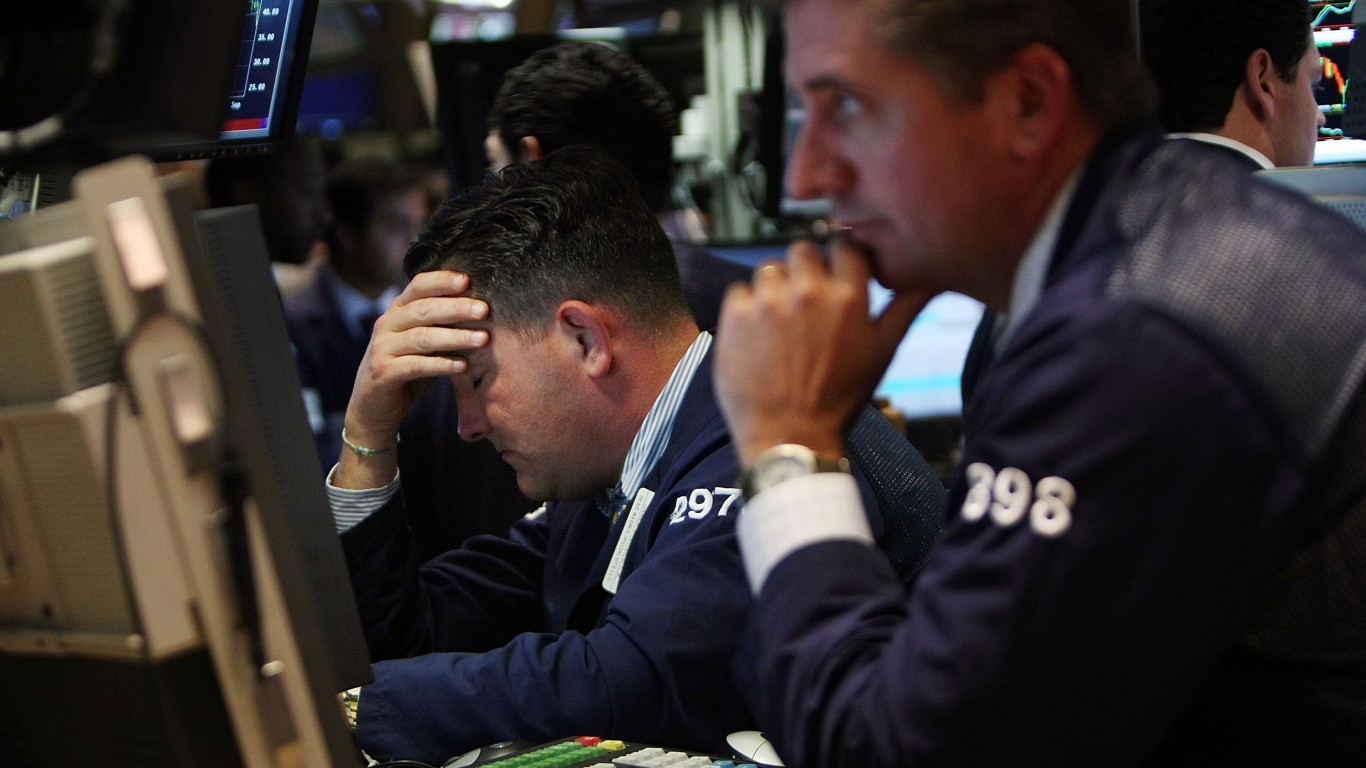
When stocks rise day in and day out it can get easy to feel panicked or spooked when there is a sudden large drop. Thursday’s mid-morning trading had gone slightly positive, but then the markets rolled over and the Dow was down a quick 300 points. The S&P 500 fell over 1% with a rapid 40 point loss and the tech-heavy NASDAQ fell about 150 points before stabilizing. While the item was not exactly in the “breaking news” category when it set in, a warning from Goldman Sachs and no real supporting trends to keep stocks up was seen.
There is an old joke about why markets fall — more sellers than buyers. As for Thursday’s drop that took all of the major indexes lower, several key issues can be referenced.
24/7 Wall St. tracked six issues during the trading day that would have accounted for a large sell-off that was followed by some buying interest after blowing through some of the normal and mechanical trading levels.
1) Goldman Sachs Sounded Grim
It turns out that Goldman Sachs issued an early report warning its clients about the risks around the novel coronavirus being greater than the market was pricing in. On average, Apple, Microsoft, Facebook, and Alphabet posted 20% earnings surprises in their most recent earnings reports. Those gains were much higher than that of the S&P 500, and we have already seen a micro-warning whereby Apple Inc. (NASDAQ: AAPL) already dialed down and backed away from its guidance offered in January. The risk now is that slow returns back to work in China could create lower earnings. Peter Oppenheimer, the Goldman Sachs chief global equity strategist, warned about the near-term risk:
We believe the greater risk is that the impact of the coronavirus on earnings may well be underestimated in current stock prices, suggesting that the risks of a correction are high.
2) Headline Noise Around Consumer Products
Procter & Gamble (NYSE: PG) made an announcement on Thursday morning that it would also be materially impacted by the coronavirus issues in China. The company reminded investors that China is the company’s second-largest market for revenues and profits. Still, the stock was up after it said it was sticking with its prior revenue growth forecast for 2020 despite not offering specifics about the coronavirus impact.
3) More Headline Noise in Transportation
International Air Transport Association, or IATA, released its adjusted forecast to take the impact of the coronavirus into account for the airline industry. While the numbers are harsh at more than $29 billion in expected lost revenues in the airline industry in 2020, only about $1.5 billion of that was outside of the Asia-Pacific region. American Airlines Group Inc. (NASDAQ: AAL) and United Airlines Holdings, Inc. (NYSE: UAL), both of which had scrubbed China schedules, were actually up almost 1% on the day.
4) Proper/Improper Cases Being Counted?
The state-run Global Times in China reported that there had been a sharp rise in the number of coronavirus cases in Beijing. The site also ran news that China’s domestic tourism revenue is projected to fall some 69% in Q1 alone due to the coronavirus epidemic.
5) Rate Cut Euphoria Squashed
Federal Reserve Vice Chairman Richard Clarida was on CNBC this morning and he seemed to dash hopes and expectations of a Fed rate cut this summer. Clarida acknowledged the FedWatch and Fed Fund Futures pointing to better than a 50% chance of a rate cut as soon as this summer, but Clarida noted that of the 70 economists making rate forecasts there were closer to 50 who were not expecting an interest rate cut by the Fed.
6) No Major Earnings Gains
There may have been the key E*Trade/Morgan Stanley merger announcement, but earnings season has basically petered out and we are entering a time where corporate news is likely to be muted outside of new products and updates. This is far from a “sole reason to sell,” but it does support that any selling of size might find less support and less buying interest than when volumes are higher and news is coming out.
Investors and traders love to have great logical explanations about why markets move the way they move. The big swing was the 165 point drop from peak to trough in the tech-heavy NASDAQ. That took place in just 45 minutes, but the NASDAQ was down less than 70 points heading into the close. Sometimes there really are just more sellers than buyers.
Thank you for reading! Have some feedback for us?
Contact the 24/7 Wall St. editorial team.





